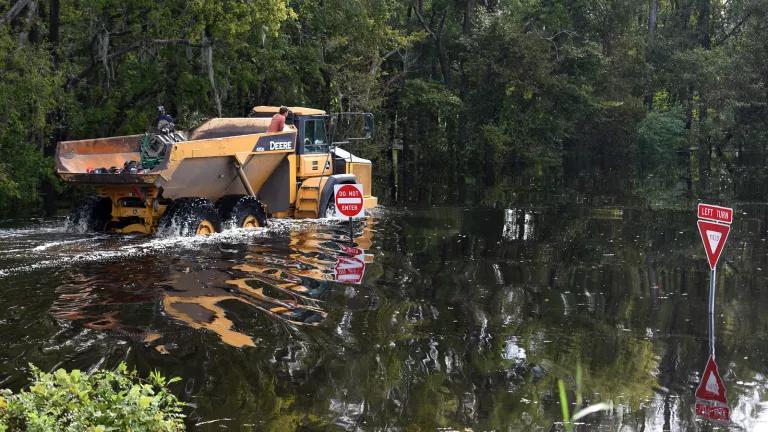Amendment Undermines Flood Protection by Local Communities
Representative Garret Graves of Louisiana proposed an amendment to the Transportation and Housing and Urban Development appropriations bill that would have prohibited local communities from using federal funds to make their residents safer from flood disasters.

Representative Garret Graves of Louisiana proposed an amendment to the Transportation and Housing and Urban Development appropriations bill that would have prohibited local communities from using federal funds to make their residents safer from flood disasters. The House Committee on Rules held the amendment out of order, stopping it for now. However, Representative Graves has consistently introduced such amendments to various appropriations bills.
Flooding is already the most common natural hazard in the United States, and as the climate changes, the frequency and severity of flooding is projected to only worsen. Tying the hands of local communities and the federal government from acting to prepare for such not only wastes taxpayer dollars but threatens public safety.
The Graves amendment would have prohibited funds from the Department of Housing and Urban Development (HUD) from being used to build or rebuild a structure, such as an affordable housing complex, higher than the height of the 100-year flood, the minimum height requirement of the National Flood Insurance Program (NFIP) for building in flood-prone areas.
However, more than 60 percent of the U.S. population already lives in communities with higher building requirements. They have adopted standards that exceed the minimum required by the NFIP because they already know that only building to the NFIP minimum leaves them vulnerable to floods.
For example, the cities of Jacksonville and Hialeah Florida require all new structures in the 100-year floodplain to be protected one foot above the height of the 100-year flood. Similarly, the city of Betonville Arkansas, which requires three feet of added protection to the height of the 100-year flood for structures, would have been negatively impacted. Further places like Dallas, Nashville, and East and West Baton Rouge parishes in Louisiana all exceed the NFIP’s minimum standard precisely because it is inadequate.
Further, the amendment would have prevented HUD from implementing the Federal Flood Risk Management Standard (FFRMS). This flood protection standard requires federally funded infrastructure, like public housing, hospitals, fire stations, and water treatment plants, to be built with a higher margin of safety against extreme floods and sea level rise.
Concerning HUD, presently, over 11,000 HUD-funded public housing units are in the 100-year floodplain. Future flood trends require HUD think differently about how it invests its resources. With a predicted rise in sea levels and inland flooding, HUD must have the ability invest in the most responsible and resilient manner possible. The Graves amendment would have kept HUD stuck building to an outdated and irresponsible standard.
The federal government should be a leader in helping communities adapt to the impacts of worsening flooding, not a detractor. The Graves amendment would have only served to waste federal tax dollars and prevent local communities from building to a standard that they know is right the choice for protecting their citizens from flooding.




